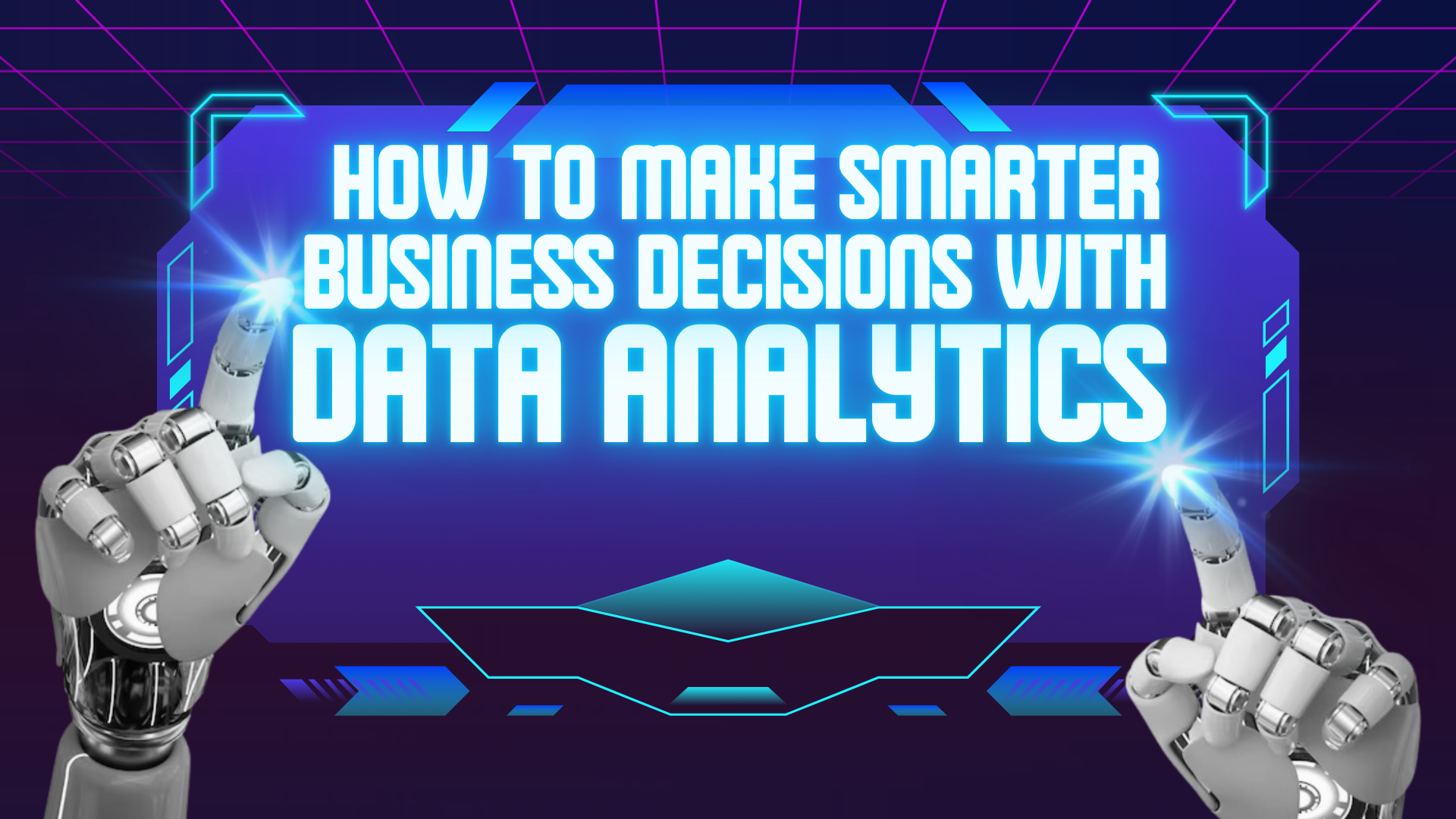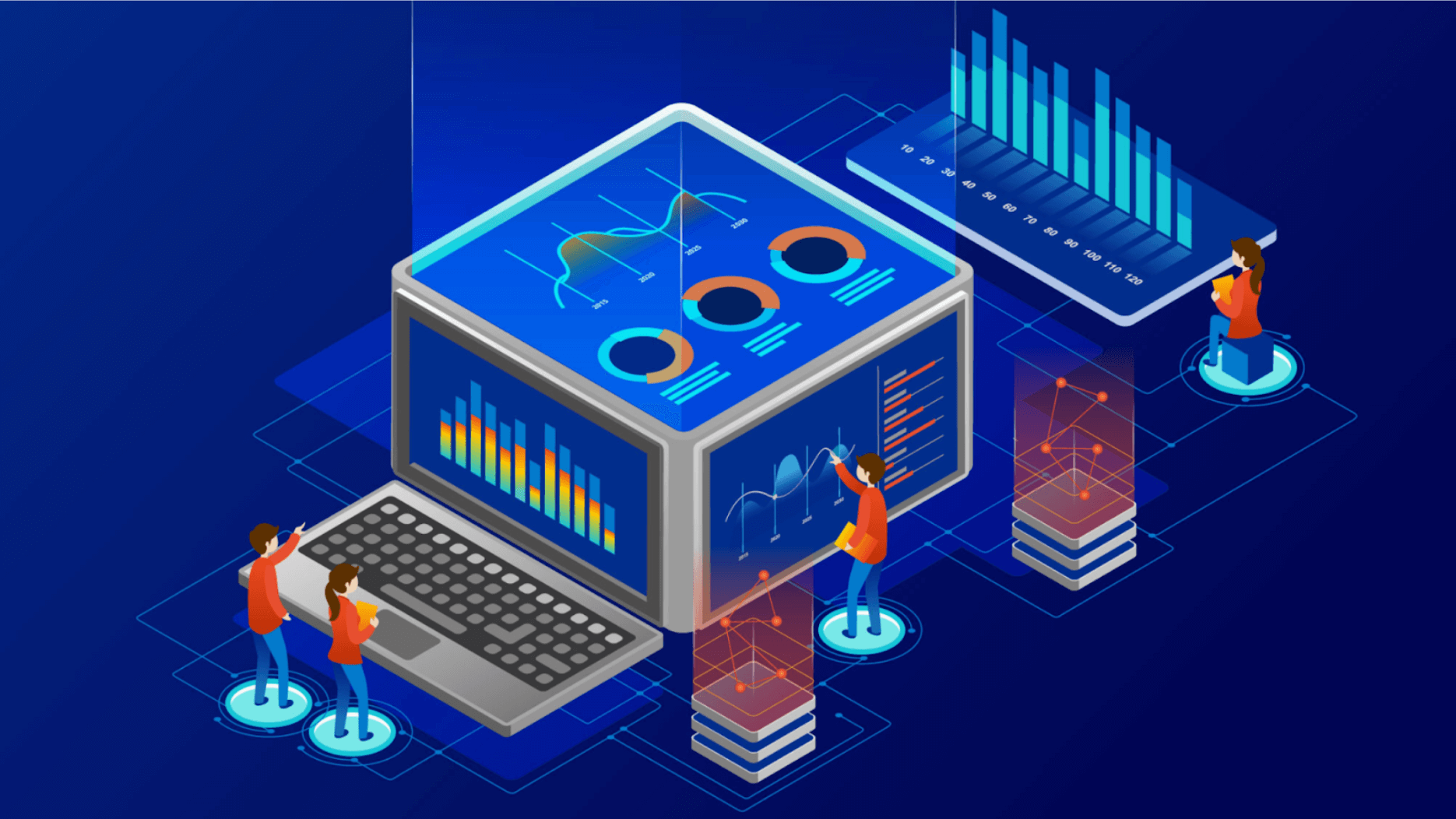Table of Contents:
- 1. Data analytics services
- 2. Business Analytics Solutions
- 3. Advanced data insights
- 4. Big Data Consulting
- 5. Predictive analytics services
Coexisting in this dynamic world is not easy. Businesses need to make quick decisions that are not only accurate but also turn out to be efficient. This efficiency can be achieved only by adopting data analytics services.
Data analytics is a process of analyzing, organizing, and interpreting data. This process helps businesses make data-driven decisions. These decisions help you get better results as all the parameters of SWOT (Strengths, Weaknesses, Opportunities, and Threats) are thoroughly taken into account.
Therefore, by harnessing the power of data analytics, businesses can get a step ahead of the competition.
In this blog, we have curated several ways you can make smarter business decisions with the help of data analytics. Here we will discuss about data driven decision making, its process, types, tools, and more. Let’s dive in.
Understanding Data-Driven Decision Making
Data-driven decision-making (DDDM) uses data analytics, insights, and factual information to form business strategies and decisions. Instead of relying on intuition and past experiences alone, organizations use real-time data and statistical analysis to evaluate options, predict outcomes, and decide what would best support their goals.
Therefore, it massively improves decision accuracy by considering useful evidence instead of doing guesswork. Businesses can understand what makes things work by analyzing structured and unstructured data like customers' behavior, emerging market trends, or internal operations' performance.
The benefits of DDDM are many; we have listed some of them below.
- It fosters efficiency and productivity by revealing bottlenecks, automating routine tasks, and optimizing resource allocation.
- It allows for greater insight into customer needs so companies can tailor experiences to predict further needs and increase satisfaction.
- Data-driven businesses gain by responding rapidly to market changes and shifts in demand.
- Through predictive analytics services, companies track trends and mitigate risks by adjusting their strategic posture ahead of time.
In the digital economy of today, one of the most valuable assets is data. Organizations that develop the ability to wield their power through data-driven decision-making stand ahead in innovation, development, and competition.
Data-Driven Decision-Making Process :
Data-driven decision-making follows six essential steps. A comprehensive set of steps could be mapped out methodically:
Step 1: Defining Clear Objectives :
Clear business objectives lie at the heart of effective data-driven decision-making. Objectives must be clearly stated, quantifiable, and aligned with higher organizational goals. Clear objectives ensure that data initiatives are focused and relevant, thus directing the kind of data to be gathered and analyzed.
Step 2: Data Identification and Collection :
Once the goals have been set, it is the organization's responsibility to find out what data is required. This includes data from internal and external sources such as customer databases, website analytic records, revenue collections, and third-party platforms. Data must be collected using the right means, whether by appropriate automated tools or manual methods. Such will ensure that the data is accurate and complete.
Step 3: Data Organization and Exploration :
Data must be cleaned and formatted and/or structured to lend itself effectively to analysis. This includes, for example, removing inconsistencies, taking care of missing values, and categorizing data types. Exploration is necessary to discover a first set of patterns, anomalies, or possible correlations that may steer the analysis.
Step 4: Analyze Data :
Analysts seek actionable insights using Excel, Python, or BI systems like Tableau or Power BI. Depending on the presence and complexity of the problem, they might perform statistical analyses or perhaps engage in predictive modeling or machine learning.
Step 5: Draw a Conclusion :
Interpretation implies putting the results into context. Advanced data insights must be aligned with business objectives to ensure they lead to meaningful and actionable conclusions. This step involves choosing the best course of action supported by data findings.
Step 6: Decision Implementation and Monitoring :
Based on appropriate insights, any worthwhile decision should go to implementation. A good monitoring system for success should stay in place with adaptable strategies that may change from the results; therefore, continuous feedback mechanisms arm an organization to improve its methods and future decision-making processes.
A disciplined method will ensure moving from data to application. Therefore, it augments agility, accountability, and performance across the board.
Types of Data Analytics in Decision Making
Decision-making is promoted with the application of data analytics that offers alternative perspectives of business performance. Each analytics type having a particular use contributes to a more informed, strategic decision.
1. Descriptive Analytics: Past Performance
Descriptive analytics entails analyzing what happened, or summarizing past datasets. It makes use of data aggregation techniques and data mining from previous performance. Sales reports, trends in website traffic, and summaries of customer feedback are given as examples to demonstrate how an organization can look for patterns or track main accomplishments or challenges. It forms the basis for further and advanced analytics.
2. Diagnostic Analytics: Cause of an Outcome
While descriptive analytics tells you "what happened," diagnostic analysis answers "why did it happen?" The premise of diagnostic analytics goes further into data examination to pinpoint root causes for particular outcomes. These would include drill-down analysis, correlation, and statistical tests. This may help find out why products have failed, churn has suddenly increased, or campaigns are not doing well. Knowing why certain things happen is crucial in stopping organizations from repeating mistakes and thus, better their performance.
3. Predictive Analytics: Forecasting Future Trends
Using different sets of techniques, such as machine learning and statistics, we forecast an event in the future with historical data. This gives businesses the ability to forecast future customer changes, market variations, and operational requirements. For example, predicting customer churn enables the company to come up with some retention plans; forecasting sales for the next quarter allows for working on strategies in advance. Forecasting growth helps promote planning.
4. Prescriptive Analytics: Taking Action to Achieve Desired Outcomes
Prescriptive analytics takes it a step farther, using forecasts of future scenarios while suggesting the best alternative to reach a given set of desired outcomes. It looks for prescriptive analysis through means of optimization, simulation, or decision models that provide actionable recommendations. Be it resource allocation, pricing, or logistics planning, prescriptive analytics helps businesses make intelligent decisions faster and align their decisions with business objectives.
Tools and Technologies for Data Analytics
It is crucial to equip oneself with the appropriate tools and technologies to perform effective data analytics. The following gives one an overview of important categories, plus some examples of such tools:
a. Business Intelligence Tools
These tools are used by an organization to analyze data to support decision-making processes.
Tableau: The strength of this tool lies in its advanced visualization abilities and easy-to-use interface. With Tableau, one can prepare an interactive dashboard and reports. It is flexible to integrate with different data sources as per the requirement of the business.
Power BI: Developed by Microsoft, Power Business Analytics solutions allow for data modeling and real-time analytics. This utility further adds to its usability for businesses invested in the Microsoft ecosystem.
b. Data Management Platforms
The effective management of data is primary to analytics.
Data Warehouses: These are centralized repositories that allow the storage of structured and semi-structured data from different sources and are engineered to allow deep analysis and reporting.
c. Analytic Tools
The analytical tools are needed for data processing and interpretation. Cloud Storage: Cloud storage solutions provide scalable and flexible options for storing huge amounts of data while maintaining accessibility and recovery in case of a disaster.
Python: It is an all-purpose programming language that is commonplace in data analysis, machine learning, and automation.
R: Featuring statistical analysis and visualization, it is mostly used within an academic or research setting.
SAS: SAS is an advanced analytics tool available as installed software for unprecedented multivariate analyses and data management, especially with large organizations.
d. Integration Tools
Integration tools simplify the data combination process from multiple sources.
APIs (Application Programming Interfaces): APIs make it possible for different software systems to communicate and share data with one another in real time. .
ETL (Extract, Transform, Load) processes involve extracting data from multiple sources, transforming it into a suitable format for analysis, and loading it into a data warehouse or another storage system for further use. This three-step procedure ensures data is collected, cleaned, standardized, and integrated to support efficient querying and business intelligence.
Building a Data-Driven Culture
Building a culture of data is the foundation set for any company that wants to make well-informed decisions and compete in today's business environment. But building such an environment involves a few key components, like:
1. Leadership Commitment
Leaders must also actively foster the data environment. When executives themselves begin to use data in their decision-making process, it sets the tone for the rest of the organization. Their involvement communicates to the entire company that data is important, and everybody should start following suit. Furthermore, leaders must make sure that they articulate clear data goals for the enterprise so employees across departments are aligned around and understand those goals. From leadership support of data projects with resource commitment to day-to-day visibility of appropriate use of data, the leadership role is critical to bring about a cultural shift into data-consciousness.
2. Employee Training
To engender a data-driven culture, employees would need to be given the necessary skills to interpret and utilize data. Role-based training should be implemented to improve data literacy, enabling employees to identify and apply data insights in their day-to-day jobs. Training would focus on learning the data concepts, analytical tools, and applying insights to practical situations. Continuous learning programs would also put data front and center in the work life of the organization.
3. Data Accessibility
Relevant data must be easily accessible to employees. Organizations need to put money into building infrastructure for the quick retrieval and analysis of data. Such investments allow one to build tools and provide platforms that are simple and easy to use, irrespective of skill set. Transparency sets employees free by tearing down data silos, thus creating agile and responsive organizations that decide and act on time.
4. Encouraging the Use of Data
To reinforce the importance of data in decision-making at various organizational levels, it must be promoted for use. Allowing employees to challenge existing assumptions or test data provides a very healthy environment for inquisitiveness and constant improvement. Rewarding those who make decisions with data will further motivate teams to incorporate data into their workflows. Such actions not only enhance the performance of an individual but also encourage the growth of the association.
Challenges in Data-Driven Decision Making
Data-driven approaches do allow businesses to benefit greatly. However, certain roadblocks do exist and can affect a business in actual decision-making.
Data Quality Issues
The wrong, missing, or mismatched data will result in faulty decisions. Most common issues include missing values, duplicate entries, and improper information. Often, such issues arise due to human errors, incompatibilities between systems, or a lack of proper data-entry standards. However, putting in place a solid governance framework and doing regular audits can ensure the correctness of data.
Resistance to Change
Implementing new data-centric decision-making is often met with resistance within organizations. New methods place challenges on employees who have been used to making decisions based on intuition or experience and who may feel that their activities will now be under greater scrutiny, or that they will lose their jobs. Clear communication of the benefits of data-driven decision-making and in-depth training programs at all levels, to build data literacy, are required to overcome this resistance.
Privacy and Security Concerns
With so much data being gathered and analyzed, the primary concerns become the issues of privacy and security of this information. A theft of data or even misuse thereof would cause loss of customer trust and penalties from the regulators. Hence, incorporating all possible data protection measures such as encryption, restricting access, and adherence to data protection laws like GDPR is a must.
Conclusion
Adopting data analytics empowers businesses to make smarter, more informed decisions. By leveraging advanced tools, fostering a data-driven culture, and addressing challenges like data quality and privacy concerns, organizations can open valuable insights that drive growth and efficiency.
The journey to becoming data-driven requires commitment, continuous learning, and the right infrastructure. However, the rewards—enhanced agility, competitiveness, and strategic clarity—make it a worthwhile investment for any forward-thinking business.
Ready to transform your business with data-driven strategies? Partner with BestPeers, a top software development company, to unlock the full potential of your operations through our cutting-edge Big Data Solutions. From insight to action, we help you make smarter decisions, faster. Connect with us today and lead your industry with confidence!




